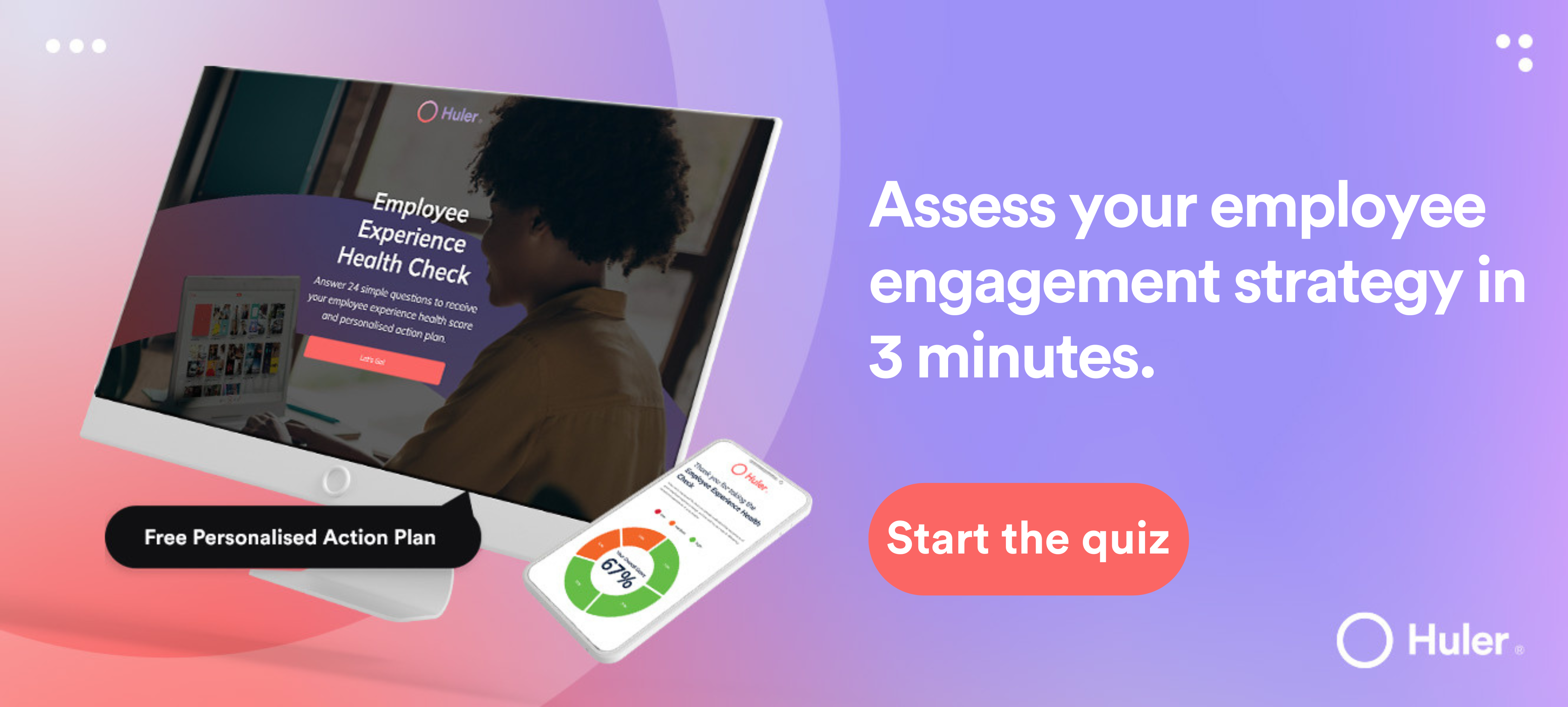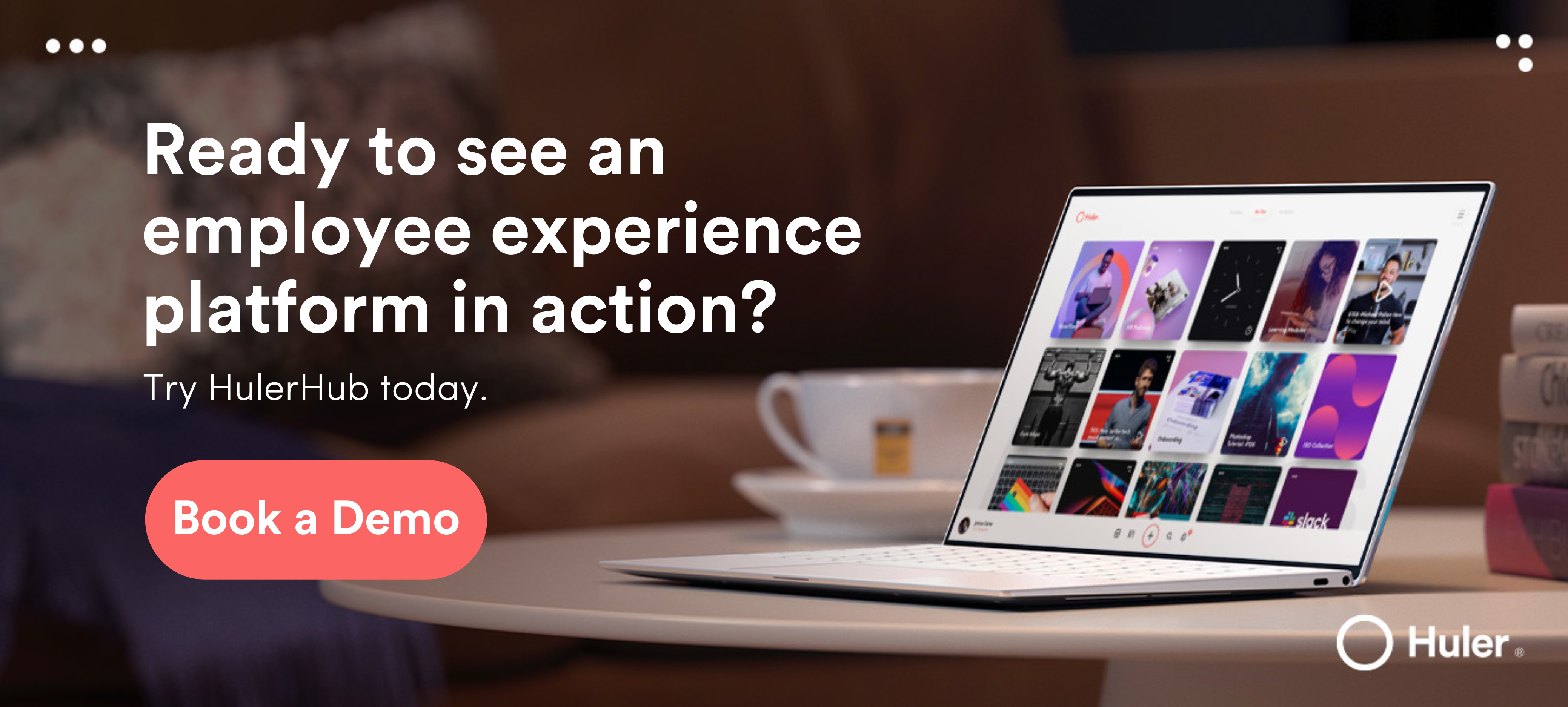How your employees work has changed. For good.
We mean that – employees are recognising what good work-life balance looks like, and reacting to it. They will stay, and put in extra effort, if you recognise what they want from their employee experience.¹ Or not, if you don’t.
In the face of the long-term and sustained increase in hybrid working and remote working patterns², the way forward for HR leaders does not require reinventing the principles we already successfully apply. Fostering a great employee experience will always come down to how an organisation can best engage its employees. But exactly what your organisation needs to do is bound to shift over time.
Let’s take a deep dive into what the future of employee experience holds, and how your business can get ready for it.
Moving past a single way to work
The employees of today (and tomorrow) want to work for employers that can provide them with flexibility, and that extends to their ways of working. So much so that nine out of 10 employees would consider leaving their jobs if they weren’t offered that flexibility.³
The major feature that employees are looking for in a flexible workplace today is the opportunity for remote working. Remote working has shifted from a quick fix to a critical employee engagement tool. Ultimately, this is because of the power of choice. The single largest benefit of homeworking, according to UK employees, is the scheduling flexibility they now have.⁴
Empowering employees to choose when, where and how they work leads to greater engagement, with over two-thirds of UK homeworkers reporting getting more – or much more – done outside of the physical office.⁵ 85% of UK business leaders agree that remote working has supported their organisation’s productivity.⁶
But this only works if you can create consistency between the home and office experience, and make it easier for your employees (wherever they may be) to collaborate. Ultimately, this comes down to the capabilities of your digital workplace.
Paving the path for personalisation
Empowering employees to personalise how they engage with their office and their work addresses two elements of the future of employee experience:
- The ability to personalise is now expected by basically anyone who has a phone or a computer, i.e. everyone!
- It acknowledges that everyone is unique, and that uniqueness should be celebrated.
Crafting a workplace culture that’s inclusive and accepting of diverse backgrounds is crucial for employees to feel like they belong. Brushing those differences aside does nothing to empower them; if anything, it can make your people feel more isolated from one another. So consider:
- Tailoring their development to them: Every employee is going to have a range of stages and goals in their personal development journeys, and that should be mirrored in the learning experiences they’re offered. To support engagement for employees of all stages, and in a variety of locations, make sure the knowledge your team needs to excel in all their job roles is fully digitally available, and flexibly accessible.
- Enhancing the employee experience journey: The best way to think about the employee experience is as a journey that starts with recruitment and continues all the way through to the alumni stage. While that journey is going to have the same touchpoints for every employee, they should still all be given the chance to tailor them to their individual experience.
An employee experience platform that supports all employees needs to incorporate flexibility. It needs to recognise that different learners take different journeys. Make sure your learning experience platform allows employees to access training when and how they need it, including on-the-job training in the form of webinars and microlearning. Enhance it by allowing colleagues the opportunity to personalise their dashboards so that they can see the content they specifically need, when they need it
Investing in wellbeing
The connection between employee mental health, morale, and your organisation’s overall productivity is well-established. Simply put, if you support your employees’ wellbeing, you’re also supporting their capacity and willingness to collaborate and achieve your strategic business goals.
We know this – but does your HR team know the best areas to invest in, in order to remain ahead of the curve?
- Work-life balance: With the increase in hybrid working modes, it’s important for your employees to feel like they’re in control. An ability to indicate when they’re unavailable to work is important for pre-emptive stress management, with being ‘always on’ a key contributing factor to exhaustion and, ultimately, burnout.
- Create consistency: Creating a sense of consistency across your digital and physical workspaces is important for employee engagement. The goal here is making sure your onsite, hybrid and remote workers don’t feel isolated from one another, meaning your access points for work applications should be the same for all, and everyone should be seeing the same key internal messages. As well as dealing with the isolation issue, consistency positively contributes to your colleagues feeling engaged and invested in their place of work.
Your platform should evidence your values and your culture. Make sure everyone has the same digital hymn sheet to sing from. Make sure it supports work-life balance, too, by investing in a digital platform that allows them to manage their availability across all their apps, in one go.
Use technology to support — not replace
To understand the future of employee experience, we need to appreciate how much of an impact the digital tools employees use have on them. The concept of digital employee experience refers to the nature of your employees’ interactions with technology at all stages of their journey with you.
With 84% of employees who began working at home over the past few years wanting to stick to hybrid working going forwards, it is clear that securing a collaborative and engaged future for your workplace relies on a great digital employee experience. This means:
- Keeping teams connected: Actively bringing people together, in spite of their varied locations and working hours, requires engagement tools. Studies show that tools such as peer-to-peer recognition are 35% more likely to have a positive impact on financial results than recognition coming solely from managers.
- Less is more: The proliferation of new apps, each with slightly different but largely overlapping feature sets, was both a handy pandemic distraction, and an unhealthy post-pandemic burden. Overwhelming your employees with digital tools can be costly, even, as dealing with tech sprawl detracts from core work capacity.
In order to enable your people to recognise and support one another – and to feel part of a team, wherever they may be – choose an employee experience platform that allows employees to support and celebrate each other. Ensure this platform is all-encompassing, so that celebration, communication and core work apps are all accessible through the same portal.
An employee experience platform that puts your people first
In the past, employee experience would often be thought of solely in the context of what HR leaders and teams could do to support their employees. While that’s always going to be a huge talking point in the world of HR, we at Huler believe that it’s a company-wide responsibility to make sure that the employees of the future are having their needs met.
That’s why the digital employee experience platform you offer your teams needs to consistently support all your employees, in every interaction. Choose a platform designed to support the future of employee experience, with built-in personalisation, wellbeing and recognition features.
To see how our HulerHub software can transform your employee experience, book a demo today.
¹ What workplace trends are we expecting to see in 2023? – HRreview
² Is hybrid working here to stay? – Office for National Statistics
³ How flexible organizations can create stability in the Great Resignation | EY – Global
⁴ Working from home statistics UK [Updated January 2023]
⁵ Homeworking in the UK: Before and During the 2020 Lockdown






